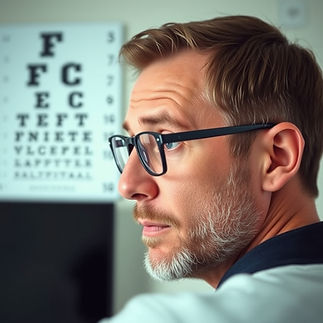
Understanding your prescription
Your prescription has a lot of numbers on it. Ever wonder what they all mean ?
You have been for an eye test at the opticians, and they have emailed you or given you your prescription. The optician has discussed your eye sight and has made suggestions on what glasses you need. Perhaps you just need readers or need them for distance work. How do the numbers tell you this ?
The Sphere (Sph)
The Sphere value (Sph) indicates the strength of lens to correct your focus. A positive value indicates a correction for long sightedness. (also known as hyperopic) A negative value indicates a correct for short sightedness. (also known as myopia)
The units are known as dioptre. You could have a zero value in this field which indicates a different issue. (For example you may have astigmatism which is adjusted with another value)
The Cylinder (Cyl)
The Cylinder value (Cyl) is one value that compensates for astigmatism. Astigmatism is where the eye is not curved the way it should be. The optician may also mention that your eye is rugby ball shaped. A value here will try and compensate for your eye ball shape.
The units for this is also using the dioptre.
The Axis (Axis)
The Axis value (Axis) is the other value that compensates for astigmatism. As well as trying to compensate for the curvature, the axis is measured in degrees.
The Prism (Prism)
The Prism value (Prism) is to correct for some other eye conditions where the focus needs to move position. A prism value is accompanied by a direction (IN, OUT, UP, DOWN)
The units for this is also using the dioptre along with the direction.
The Addition (Add)
The Addition value (Add) is short for reading addition. This value is used for reading and varifocals. The value is used as an additional power on top of the distance prescription.
The units for this is also using the dioptre.
Other Values
Visual Acuity (AC)
The Visual Acuity (VA) value is a measure of how clearly you can see objects at a distance of 6 meters (or 20 feet) depending on country.
This is shown as a fraction of the indicated length. The first number is the value at which you can see the test chart and the second is the distance a 'normal' person can see the same chart. Normal vision is therefore expressed as 6/6 (or 20/20) If the first number is less than the second it indicates that you need to be closer to see the same details. In theory a good pair of glasses should adjust your vision to be normal i.e. back to 6/6 (or 20/20) In some cases, the prescription may help but will be unable to restore your sight to 'normal' vision.
The value is more an indicator for yourself, so you know what to expect when you receive your glasses and is not needed to order glasses.
It is also where the expression 20-20 vision comes from as this implies that you have perfectly normal' vision.
Contact
If you wish to enquire what is best for you, please email and ask. We are happy to help you pick the best choice for your prescription.
123-456-7890



